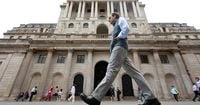Inflation in the United Kingdom held steady at 3.8% in September 2025, marking the third consecutive month at this level, according to new data released on October 22 by the Office for National Statistics (ONS). The figure surprised economists, who had widely predicted a rise to 4%—a rate that would have doubled the Bank of England’s official target. Instead, the unchanged number has sparked renewed debate about the likelihood of an interest rate cut at the Bank’s upcoming policy meeting in November, and it’s set the stage for a politically charged budget season.
The ONS report, as cited by The Associated Press, revealed that higher petrol prices and airfares were the main contributors to inflationary pressure in September. However, these were largely offset by falling prices for food and non-alcoholic drinks, which dropped for the first time since May 2024. Grant Fitzner, chief economist at the ONS, explained, “The largest upward drivers came from petrol prices and airfares, where the fall in prices eased in comparison to last year. These were offset by lower prices for a range of recreational and cultural purchases including live events. The cost of food and non-alcoholic drinks also fell for the first time since May last year.”
Core inflation, which strips out the more volatile categories of energy, food, alcohol, and tobacco, also edged down—rising by 3.5% in the year to September, compared to 3.6% in August. This cooling in underlying price pressures has been welcomed by some as a sign that the worst of the inflation surge may be in the rear-view mirror. “Price pressures should begin to slowly ease in the coming months, but we are unlikely to see a more substantial downshift in inflation until the first half of next year,” said Martin Sartorius, principal economist at the Confederation of British Industry, in comments reported by AP. Sartorius described the steady inflation as a “downside surprise” that could open the door to a rate cut at the Bank of England’s next policy meeting on November 6.
Yet, the mood among analysts is far from unanimous. According to CNBC, George Brown, senior economist at Schroders, cautioned, “Inflation near 4% should serve as a wake-up call for markets, which continue to price in two more rate cuts next year.” Brown went further, warning that high inflation could become entrenched in the UK due to “disappointing productivity and sticky wage growth.” He added, “We expect the Bank of England will keep interest rates on hold until the end of 2026 and we wouldn't rule out its next rate move being upward.”
This divergence of opinion is echoed by Suren Thiru, economics director at the ICAEW, who observed that “despite softer than expected inflation, the chances of a November rate cut are hanging by a thread, particularly as rate-setters will likely want to analyse the inflationary impact of any measures announced in the Budget before relaxing policy again.” The Bank of England’s Monetary Policy Committee is indeed in a tricky spot, with inflation still nearly double its 2% target and economic growth stubbornly sluggish—the UK economy expanded by just 0.1% month-on-month in August, according to ONS figures.
For Chancellor of the Exchequer Rachel Reeves, the inflation data comes at a pivotal moment. Reeves is preparing to deliver her first Autumn Budget on November 26, an event widely expected to include both tax rises and spending cuts. The September inflation rate is used as the basis for linking welfare benefits in the coming year, meaning that the steady figure will keep the cost of funding those benefits lower than anticipated. Nonetheless, Reeves expressed dissatisfaction with the inflation numbers, stating, as quoted by CNBC, that she was “not satisfied” and that “all of us in government are responsible for supporting the Bank of England in bringing inflation down.”
The Chancellor has also hinted at “targeted action” to help with the ongoing cost-of-living crisis, with speculation swirling over potential moves like reducing the VAT charged on energy bills. Such measures could provide some immediate relief to households but would need to be balanced against the government’s fiscal constraints. Scott Gardner, an investment strategist at J.P. Morgan-owned Nutmeg, commented, “A mixed economic picture has emerged for the U.K. over recent months which is setting the tone for difficult decisions in the upcoming Budget. It isn't just the Chancellor who has little room for manoeuvre with the Bank of England also having few levers to pull as the economy experiences a period of elevated inflation and low growth.”
The Bank of England, for its part, has kept its main interest rate at 4% since its last meeting, holding steady despite calls for both tighter and looser monetary policy. Some market watchers, like Matthew Ryan of Ebury, believe the central bank’s Monetary Policy Committee is “stuck between a rock and a hard place.” Ryan noted, “The cooling in Britain's jobs market is screaming out for further reductions in the base rate, but high inflation warrants a need for caution. We think that most officials will probably need to see more evidence that inflation has indeed peaked, but today's data does at least mark a step in the right direction.”
Looking ahead, the consensus is that a rate cut at the November 6 meeting is unlikely, with some economists now betting on the Bank’s final meeting of the year, December 18, as a more probable date for any easing—though even that is far from certain. Persistent inflation could push any rate cuts into 2026, especially if wage growth remains robust and productivity fails to improve. For now, the Bank’s policymakers appear to be in wait-and-see mode, closely monitoring incoming data and the government’s upcoming budget decisions.
For British consumers and businesses, the message is mixed. While the steady inflation rate offers some hope that the worst of the price surge is over, the financial squeeze remains acute. Petrol and airfare costs are still climbing, and wage growth has not kept pace for many. Yet, the fall in food and drink prices provides a glimmer of relief, particularly for lower-income households who spend a greater share of their income on essentials.
As the country heads into a crucial budget season, all eyes are on the interplay between fiscal and monetary policy. With the Chancellor and the Bank of England both facing limited options and mounting pressures, the coming weeks are likely to be decisive for the UK’s economic trajectory. Investors, policymakers, and ordinary citizens alike will be watching closely to see if inflation finally begins its long-awaited descent—or if the path to stability remains as uncertain as ever.


